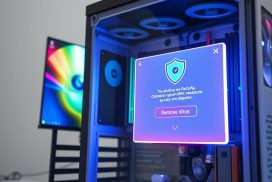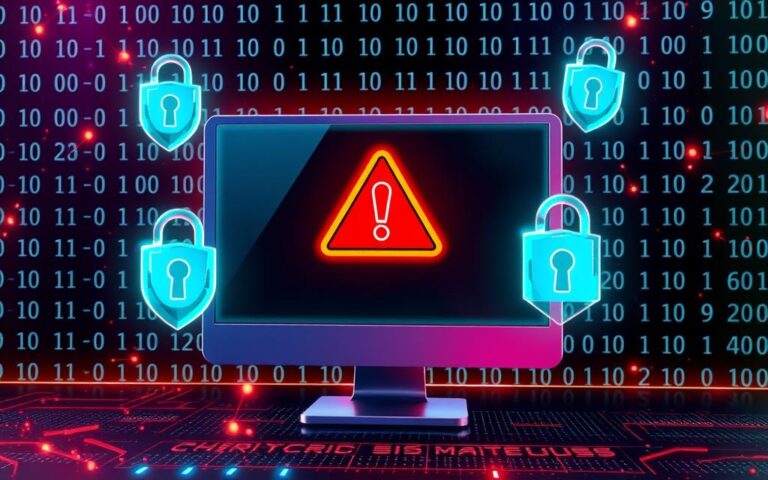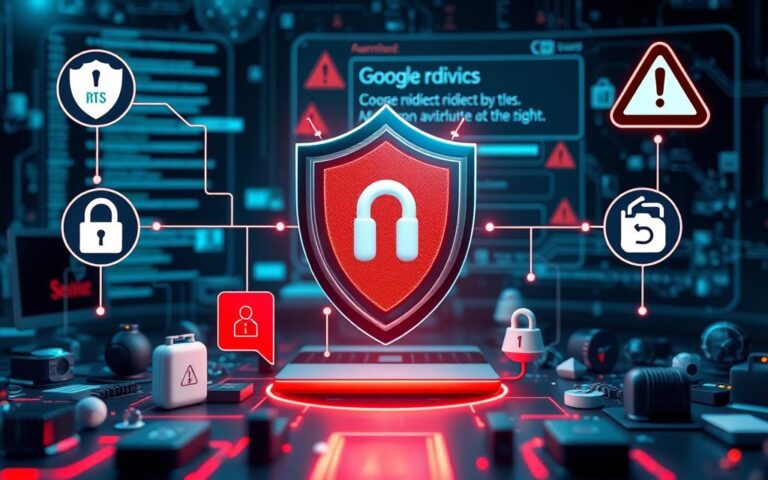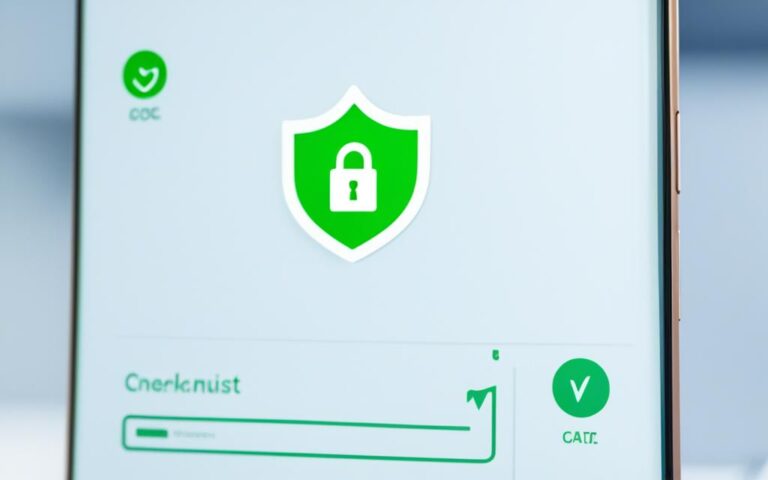Threat Neutralization: Advanced Strategies for IT Professionals
Welcome to our comprehensive guide on advanced threat strategies in cyber defense, focusing on the critical aspects of threat detection and response. In today’s rapidly evolving digital landscape, organizations face increasingly sophisticated cyber threats that can compromise sensitive data and disrupt critical systems. To combat these challenges, IT professionals need to adopt advanced strategies and techniques to proactively neutralize threats.
Effective threat detection and response is paramount in safeguarding organizations from cyber attacks. It involves continuously monitoring networks and applications for suspicious activity, using advanced threat intelligence and machine learning algorithms to identify and respond to potential threats. By implementing robust threat detection and response measures, organizations can minimize the impact of attacks, protect sensitive data assets, and ensure the uninterrupted operation of critical systems.
In this article, we will explore the fundamentals of threat detection and response, share best practices for maximizing the effectiveness of these strategies, and highlight the benefits of implementing a comprehensive threat detection strategy. Additionally, we will delve into the process of threat detection, investigation, and response, as well as the tools and technologies that IT professionals can leverage to enhance their cybersecurity posture.
Read on to discover how advanced threat strategies can bolster your organization’s cyber defense capabilities and protect your digital assets.
What Is Threat Detection and Response?
Threat detection and response are critical components of cybersecurity, enabling organizations to identify and thwart potential cyber threats. By collecting data from various sources such as network traffic and system logs, analysts can analyze this data to detect anomalies or suspicious behavior that may indicate a cyber attack. This process involves leveraging advanced threat intelligence and machine learning algorithms to identify threats that traditional security measures may miss.
Threat detection and response serve as the first line of defense against cyber threats, helping organizations protect their sensitive data and maintain the integrity of their systems. By swiftly identifying and neutralizing potential threats, organizations can minimize the damage caused by cyber attacks and ensure business continuity.
“Threat detection and response play a crucial role in safeguarding against cyber threats. By leveraging data analysis and machine learning algorithms, organizations can proactively detect and neutralize threats before they cause significant damage.”
The process of threat detection and response involves several steps:
- Data Collection: Gathering data from various sources such as network traffic, system logs, and security solutions.
- Data Analysis: Analyzing the collected data to identify anomalies and suspicious behavior that may indicate a cyber attack.
- Threat Identification: Leveraging advanced threat intelligence and machine learning algorithms to identify known and unknown threats.
- Response and Mitigation: Taking immediate action to neutralize the detected threats and mitigate their impact on the organization.
- Continuous Monitoring: Implementing proactive monitoring to detect and respond to emerging threats in real-time.
Implementing an effective threat detection and response strategy requires organizations to leverage advanced technologies, such as machine learning algorithms, to analyze large volumes of data and identify patterns indicative of cyber threats. By combining human expertise with automated analysis, organizations can stay one step ahead of cybercriminals.
Benefits of Threat Detection and Response
Implementing a robust threat detection and response strategy offers several benefits:
- Early Threat Detection: By continuously monitoring networks and systems, organizations can detect threats at an early stage, minimizing the damage caused by cyber attacks.
- Improved Incident Response: With an effective threat detection strategy in place, organizations can respond swiftly and effectively to incidents, reducing downtime and minimizing the impact on operations.
- Protection of Sensitive Data: Threat detection and response help safeguard sensitive data from unauthorized access, minimizing the risk of data breaches and regulatory non-compliance.
- Enhanced Cybersecurity Posture: By proactively detecting and neutralizing threats, organizations can strengthen their overall cybersecurity posture, protecting their digital assets and maintaining customer trust.
Threat detection and response play a pivotal role in today’s evolving threat landscape, where cyber threats are becoming increasingly sophisticated. By continuously monitoring and analyzing data using advanced technologies, organizations can stay ahead of cybercriminals and protect their critical assets.
Best Practices for Threat Detection
Enhancing threat detection capabilities is a critical aspect of cybersecurity for organizations. By utilizing advanced threat intelligence tools, conducting vulnerability assessments, establishing baseline behavior profiles, and leveraging artificial intelligence and machine learning, businesses can stay ahead of evolving threats and protect their digital assets.
Utilize Advanced Threat Intelligence Tools
Advanced threat intelligence plays a vital role in automating the monitoring and analysis of threat data. These tools collect and analyze vast amounts of information from various sources, enabling organizations to detect and respond to threats more effectively. By leveraging real-time data and actionable insights, businesses can proactively identify and neutralize potential cyber threats.
Regular Vulnerability Assessments
Regularly conducting vulnerability assessments helps organizations identify weaknesses in their systems and networks. These assessments involve actively scanning for vulnerabilities, misconfigurations, and outdated software. By addressing these vulnerabilities promptly, businesses can minimize the risk of potential attacks and strengthen their overall security posture.
Establish Baseline Behavior Profiles
An essential practice in threat detection is establishing baseline behavior profiles. This involves monitoring and capturing normal patterns of user and system behavior within the organization. By establishing these profiles, any deviations or anomalies can be quickly identified and flagged as potential threats. Baseline behavior profiles serve as a reference point for effectively detecting and responding to unusual activities or suspicious behavior.
Leverage Artificial Intelligence and Machine Learning
“Artificial intelligence and machine learning algorithms have revolutionized threat detection by analyzing vast amounts of data and detecting new threats based on behavior patterns.”
Artificial intelligence (AI) and machine learning (ML) algorithms significantly enhance threat detection capabilities. These advanced technologies can analyze large quantities of data to identify patterns and trends that may indicate potential threats. By continuously learning and adapting, AI and ML algorithms can detect and respond to emerging threats that may evade traditional security measures.
Implementing these best practices empowers organizations to strengthen their threat detection capabilities, mitigate risks, and protect their sensitive data from cyber threats.
Best Practices for Threat Response
When it comes to effectively responding to cyber attacks, organizations must follow best practices for threat response. By implementing incident response plans, establishing clear communication protocols, practicing threat isolation and containment, addressing the root cause of attacks, and providing comprehensive employee training, businesses can mitigate the impact of security breaches and protect their digital assets.
Incident Response Plans
Developing and regularly testing incident response plans is critical for an efficient response to cyber attacks. These plans outline the step-by-step procedures and actions to be taken when an incident occurs. They provide a structured approach for incident assessment, containment, eradication, and recovery.
Communication Protocols
Establishing clear communication protocols is essential for swift response and coordination during a security incident. These protocols ensure that all relevant stakeholders, such as IT teams, executives, and external partners, are promptly notified about the incident. Effective communication facilitates a coordinated and cohesive response strategy.
Threat Isolation and Containment
Threat isolation and containment involve identifying affected systems and isolating them to prevent further damage. This practice includes segregating compromised networks or devices from the rest of the infrastructure to halt the spread of the attack. By swiftly containing the threat, organizations can limit the potential impact and protect critical assets.
Root Cause Remediation
Addressing the root cause of an attack is crucial to prevent similar incidents in the future. Organizations must conduct a thorough investigation to identify vulnerabilities and weaknesses in their systems, networks, or processes. By identifying and remedying these root causes, businesses enhance their security posture and decrease the likelihood of future breaches.
Employee Training
Comprehensive employee training is essential for an effective and coordinated response to cyber threats. All employees should receive regular training on cybersecurity best practices, incident response procedures, and the identification of potential threats. By educating the workforce, businesses empower their employees to be proactive in identifying and reporting security incidents.
Benefits of a Threat Detection Strategy
Implementing a comprehensive threat detection strategy offers several benefits. It minimises the damage caused by cyber attacks, protects sensitive data from compromise, and helps organizations meet regulatory compliance requirements. By investing in threat detection and response, organizations can save time, money, and reputation.
The Process of Threat Detection, Investigation, and Response
In today’s evolving cybersecurity landscape, organizations must be proactive in their approach to threat detection, investigation, and response. By following a well-defined process, organizations can stay ahead of emerging threats and effectively mitigate their impact. This section will explore the key steps involved in the threat management cycle.
1. Proactive Threat Hunting
Threat detection begins with proactive threat hunting, where security professionals actively search for potential threats within the network. This involves conducting regular security assessments, analyzing network traffic, and identifying any anomalies or suspicious patterns. By taking a proactive approach, organizations can identify threats before they cause significant damage.
2. Detection of Threats and Anomalies
Advanced technologies such as machine learning algorithms and artificial intelligence play a pivotal role in detecting threats and anomalies. These technologies analyze vast amounts of data from various sources, including network logs and endpoint devices, to identify malicious activities. By leveraging these technologies, organizations can enhance their threat detection capabilities and identify threats that traditional security measures may overlook.
3. Prioritization and Threat Analysis
Once a threat is detected, it is essential to prioritize and analyze its severity and potential impact. This involves assessing the threat’s nature, determining its potential vulnerabilities, and evaluating the risks associated with it. By prioritizing threats based on their criticality, organizations can allocate their resources effectively and respond to the most significant threats first.
4. Response and Remediation
When a threat is confirmed, organizations need to respond swiftly and effectively to mitigate its impact. This may involve isolating affected systems, implementing security patches, updating access controls, and executing incident response plans. By responding promptly and taking appropriate remedial actions, organizations can minimize the damage caused by the threat.
5. Recovery and Learning
After containing the threat and resolving the incident, organizations need to focus on recovery and learning. This involves restoring affected systems, analyzing the root cause of the incident, and implementing measures to prevent similar threats in the future. By learning from past incidents, organizations can strengthen their defenses and improve their overall cybersecurity posture.
By following this continuous cycle of threat detection, investigation, and response, organizations can stay proactive in their approach to cybersecurity. It enables them to effectively identify, analyze, and mitigate threats, ensuring the protection of critical assets and data.
Tools and Technologies Used in Threat Detection, Investigation, and Response
Threat detection, investigation, and response involve leveraging various tools and technologies to ensure effective cybersecurity. These state-of-the-art solutions provide organizations with the necessary capabilities to detect and neutralize threats, safeguard sensitive data, and maintain the integrity of their digital environments.
1. Security Information and Event Management (SIEM) systems
SIEM systems collect and analyze data from multiple sources, such as logs and security events, to identify potential threats. They provide real-time monitoring, threat intelligence, and detailed reporting, allowing security teams to take proactive measures.
2. Endpoint Detection and Response (EDR) tools
EDR tools protect individual endpoints, including desktops, laptops, and servers, by monitoring their activities and detecting any suspicious behavior. These tools play a crucial role in identifying and mitigating threats at the endpoint level.
3. Intrusion Detection and Prevention Systems (IDS/IPS)
IDS/IPS solutions detect and prevent unauthorized activities within a network. They monitor network traffic, identify potential threats or policy violations, and take immediate action to block or mitigate these risks.
4. Next Generation Firewalls (NGFW)
NGFWs provide advanced firewall capabilities, going beyond traditional network traffic filtering. They use deep packet inspection, VPN support, and intrusion prevention features to protect networks from evolving threats.
5. Web Application Firewalls (WAF)
WAFs protect web applications from various cyber threats, including SQL injections, cross-site scripting (XSS), and cross-site request forgery (CSRF) attacks. They monitor and filter HTTP/HTTPS traffic, ensuring the security of web applications and preventing data breaches.
6. Cloud Detection and Response (CDR) tools
CDR tools are specifically designed to detect and respond to threats in cloud environments. They provide visibility into cloud-based assets and services, continuously monitoring for suspicious activities and enabling quick incident response.
7. Artificial Intelligence (AI) and Machine Learning (ML) algorithms
AI and ML algorithms are increasingly employed in threat detection and response to analyze vast amounts of data, identify patterns, and predict future threats. These technologies enable proactive threat hunting, rapid incident response, and enhanced overall security.
The combination of these tools and technologies empowers organizations to stay one step ahead of cyber threats, minimize the risk of breaches, and maintain a strong security posture. By continuously evolving their threat detection, investigation, and response capabilities, businesses can effectively combat the ever-changing threat landscape.
| Tool/Technology | Purpose |
|---|---|
| SIEM systems | Real-time monitoring and threat intelligence |
| EDR tools | Endpoint protection and behavior analysis |
| IDS/IPS | Network traffic monitoring and intrusion prevention |
| NGFW | Advanced firewall protection and deep packet inspection |
| WAF | Protecting web applications from attacks |
| CDR tools | Cloud-specific threat detection and response |
| AI and ML algorithms | Analyzing data and predicting threats |
Conclusion
Implementing advanced threat protection (ATP) is imperative for businesses in today’s environment to proactively defend against cyber threats. ATP provides numerous benefits, including enhanced visibility into potential threats, streamlined incident response, adaptability to emerging threats, and seamless integration with cloud analytics. However, successful implementation of ATP requires a strategic approach, careful selection of the right solution tailored to specific business needs, and meticulous deployment and integration with existing security infrastructure.
By incorporating ATP into their cybersecurity strategy, organizations can significantly enhance their overall security posture and safeguard their digital assets from a wide range of cyber threats. The improved visibility offered by ATP empowers organizations to detect and respond swiftly to potential threats, minimizing the impact of attacks. Additionally, ATP’s adaptability ensures that organizations stay ahead of evolving threats in an ever-changing threat landscape.
Choosing the right ATP solution is crucial. Organizations must thoroughly evaluate their unique requirements, considering factors such as the size of their infrastructure, industry regulations, budgetary constraints, and desired level of automation. Furthermore, a seamless deployment and integration with existing security infrastructure is vital to ensure maximum effectiveness and minimize any potential disruption.
In conclusion, implementing advanced threat protection is a strategic and proactive approach towards bolstering cybersecurity defenses. With its numerous benefits and the necessity of defending against modern cyber threats, organizations should prioritize ATP and its proper deployment and integration to safeguard their digital assets and maintain a robust security posture.
FAQ
What is threat detection and response?
Threat detection and response is the process of identifying potential threats and neutralizing them as early as possible. It involves collecting data from various sources such as network traffic and system logs, and analyzing it to identify anomalies or suspicious behavior. Advanced threat intelligence and machine learning algorithms are used to detect and respond to threats that may be missed by traditional security measures.
How can organizations enhance their threat detection capabilities?
Organizations can enhance their threat detection capabilities by utilizing advanced threat intelligence tools that automate the monitoring and analysis of threat data. Regular vulnerability assessments help identify weaknesses in systems and networks. Establishing baseline behavior profiles helps in quickly detecting any unusual activity. Leveraging artificial intelligence and machine learning can enhance threat detection by analyzing large amounts of data and detecting new threats based on behavior patterns.
What are the best practices for threat response?
Developing and testing incident response plans is crucial for effectively responding to cyber attacks. Establishing clear communication protocols ensures swift response and coordination. Threat isolation and containment involve identifying affected systems and quarantining them to prevent further damage. Remediation involves addressing the root cause of the attack and preventing it from happening again. Training employees on response procedures is essential for a coordinated and effective response.
What are the benefits of a threat detection strategy?
Implementing a comprehensive threat detection strategy offers several benefits. It minimizes the damage caused by cyber attacks, protects sensitive data from compromise, and helps organizations meet regulatory compliance requirements. By investing in threat detection and response, organizations can save time, money, and reputation.
What is the process of threat detection, investigation, and response?
The process of threat detection, investigation, and response involves proactive threat hunting to identify potential threats, detection of threats and anomalies using advanced technologies, prioritization and analysis of threats, response and remediation to mitigate the impact of the threats, and recovery and learning from the incident to improve future defenses. This continuous cycle helps organizations stay ahead of evolving threats.
What tools and technologies are used in threat detection, investigation, and response?
Various tools and technologies are used in threat detection, investigation, and response. These include Security Information and Event Management (SIEM) systems, Endpoint Detection and Response (EDR) tools, Intrusion Detection and Prevention Systems (IDS/IPS), Next Generation Firewalls (NGFW), Web Application Firewalls (WAF), Cloud Detection and Response (CDR) tools, and artificial intelligence and machine learning (AI/ML) algorithms.
How can organizations implement advanced threat protection?
Implementing advanced threat protection (ATP) requires a strategic approach, choosing the right solution based on business needs, and proper deployment and integration with existing security infrastructure. ATP offers several benefits, including improved visibility, streamlined incident response, adaptability to new threats, and cloud analytics integration. By incorporating ATP, organizations can enhance their cybersecurity posture and protect their digital assets.












